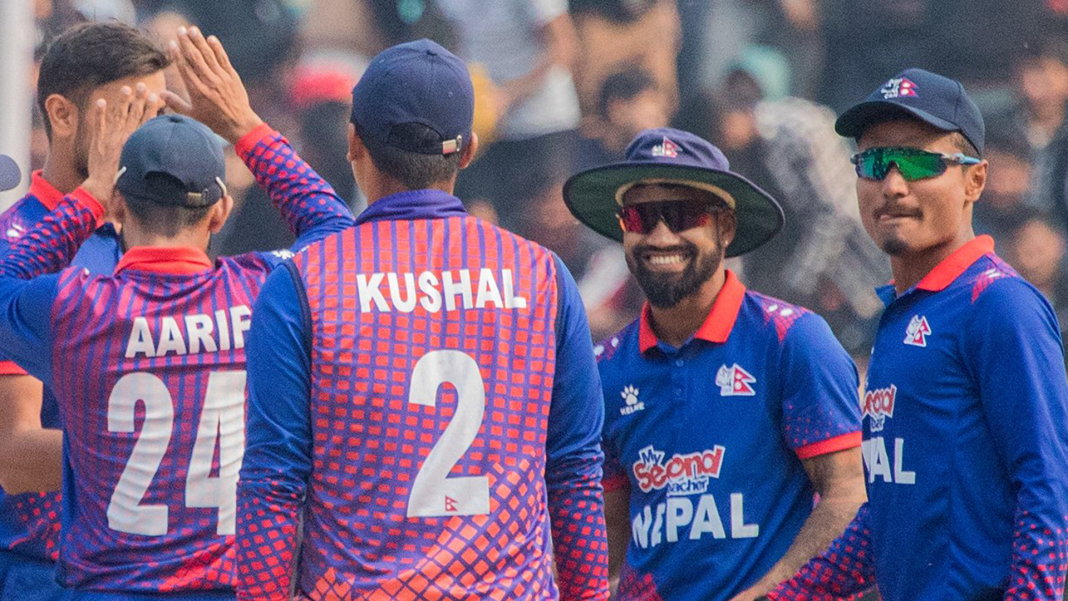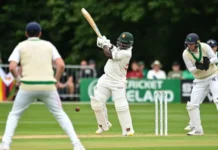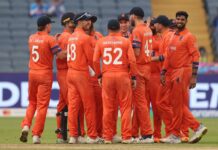The first running of the ACC Men’s Premier Cup is set to begin in Nepal, with 10 team vying for glory and one place at this year’s Asia Cup.
How does it work?
Ten teams start the tournament and are set to be whittled down to one successful qualifier over the course of 14 days. The teams are divided into two groups of five, each playing a round-robin. The top two in each group advance to the semi-finals, and the winners in turn to the final. Only the overall winner of the Premier Cup will qualify for the Asia Cup, which is provisionally set to take place in Pakistan in September.
The 10 teams include three with ODI status: hosts Nepal, Oman and UAE. Four teams are participating in the Challenge Leagues: Hong Kong, Singapore, Malaysia and Qatar. The final three teams are not currently participating in the global 50 over ladder: Kuwait, Saudi Arabia, and Bahrain, the latter two of whom qualified via the ACC Challenger Cup in March.
What is the schedule?
Twenty-four 50 over matches are crammed into only 14 days across two venues in the Kathmandu area. The group stages matches are played across consecutive days between the 18th and 27th of April, with two games each day – one at the Tribhuvan University Ground and the other at the recently constructed Mulpani ground.
The ACC Men’s Premier Cup – an integral part of ACC's new pathway structure gets underway on the 18th of April in Nepal. 10 Associate nations will battle it out for the title and the winner will directly qualify for the Men’s Asia Cup 2023. #ACCMensPremierCup #ACC pic.twitter.com/P9ybK6W4qs
— AsianCricketCouncil (@ACCMedia1) March 23, 2023
A rest day takes place after the group stage concludes, followed by both semi-finals on April 29th, one at each venue. The final takes place on 1st May, the day after a 3rd place playoff, both of which take place at the TU ground.
With up to 1200 overs of cricket to be played at the TU ground over a short window, the pitch conditions are likely to slow down and take spin increasingly as the tournament progresses.
Only matches that takes place between Nepal, Oman and UAE that take place at the TU ground will have full ODI status, since the Muplani ground does not yet have ODI accreditation from the ICC. The group stage game between Nepal and Oman is the only confirmed ODI at the time of writing, though one semi final and the final may also be official ODIs should two ODI teams qualify.
The remaining games will be classified only as 50 over matches. Although Singapore, Qatar, Malaysia and Hong Kong play in the Challenge League, which holds List A status, the ICC does not grant the teams List A status, but only the Challenge League tournament itself.
Who are the favourites?
For the first time in a while, Nepal approaches a tournament as outright favourites. After 11 wins in the last 12 ODIs, and 9 in a row at home, Monty Desai’s side arrive at a home tournament in red hot form.
All 10 captains attended the Pre-Tournament Press Conference of the #ACCPremierCup today. We wish all the best to all the teams participating, and hope to have a wonderful tournament ahead!#RoadToAsiaCup | #weCAN pic.twitter.com/ODsdzGriAn
— CAN (@CricketNep) April 17, 2023
Behind them are Oman and UAE. Oman, who finished ahead of Nepal in ODI League 2, as well as holding a superior head-to-head record in ODIs. Their last trip to Kathmandu saw Oman comfortably win all four games, including both over Nepal. However, the Omanis have since had a 10-month layoff from ODIs, having completed their League 2 campaign last June, with only an unofficial series against Canada in the meantime.
UAE’s most recent trip to Nepal was very different, winning only 1 game in 4 as the Emiratis slumped to 6th place in League 2. Since then, they have moved on from former head coach Robin Singh, and have found form at the World Cup Qualifier Playoff, winning four games out of five.
The other team to watch out for is Hong Kong. Although they have not played an ODI since 2018, Hong Kong have qualified for the last two Asia Cups, in both T20I and ODI form. And with the return to the side of Anshuman Rath, who almost lead his side to an improbable victory over India in 2018 and are dark horses to qualify again.







